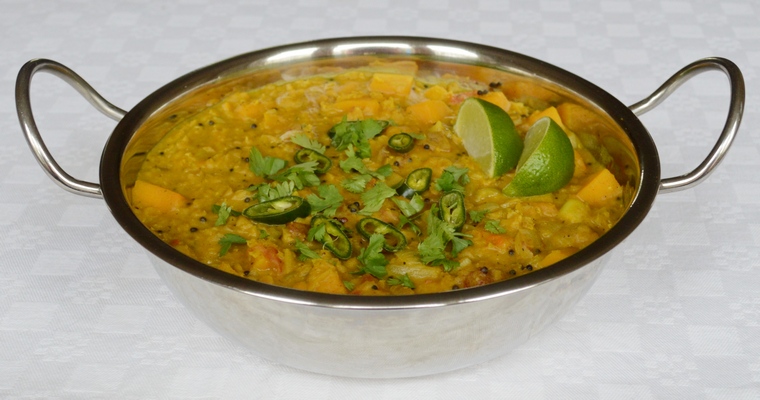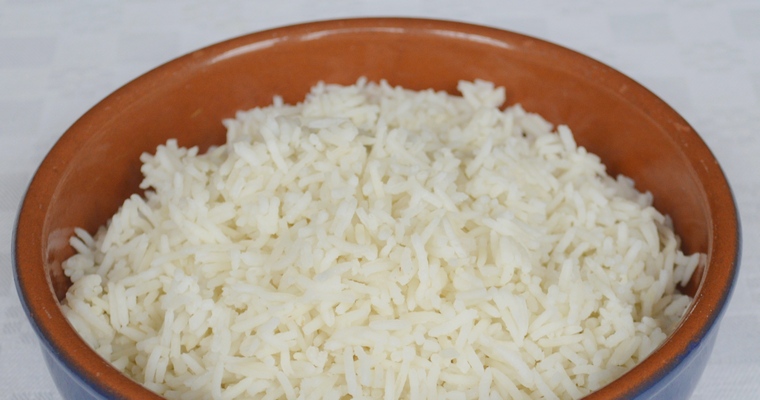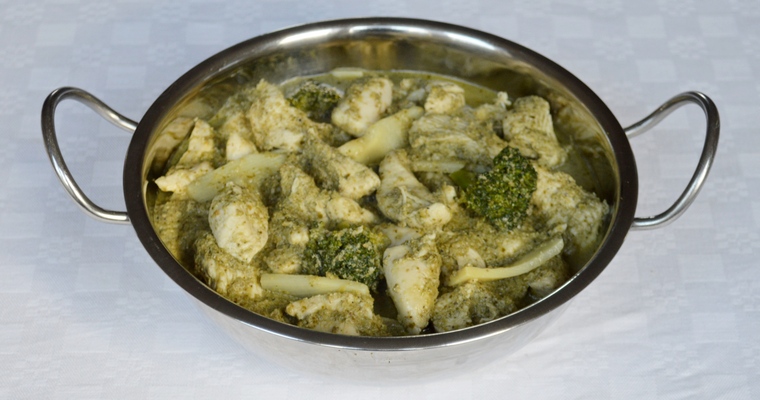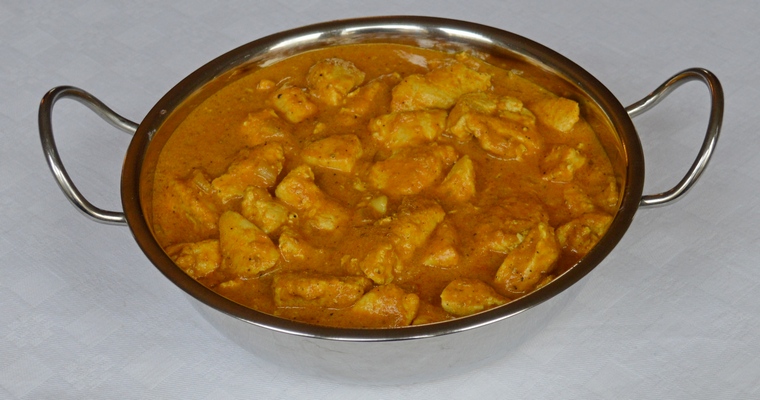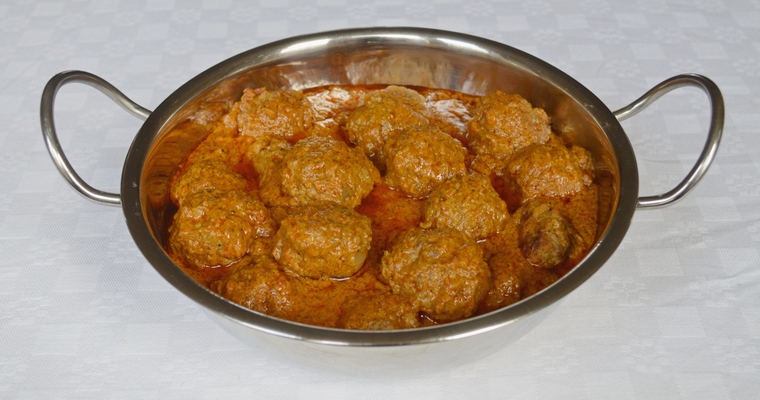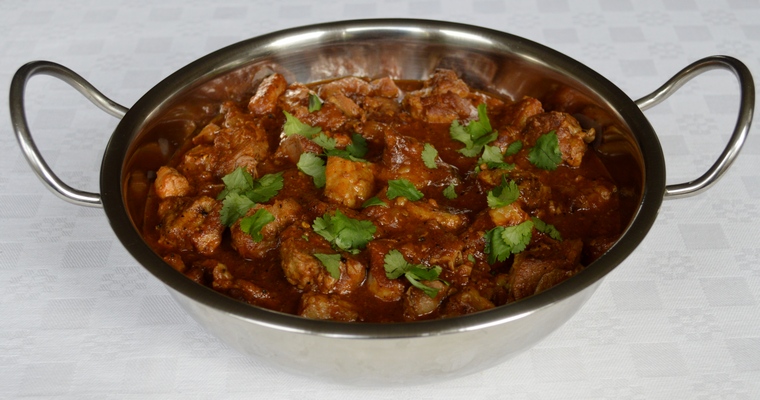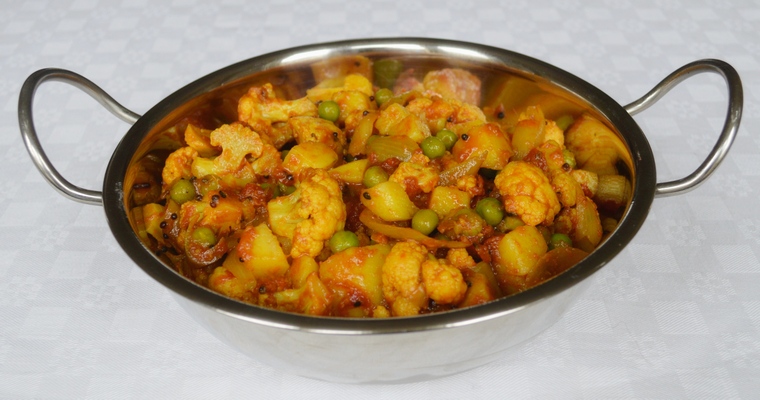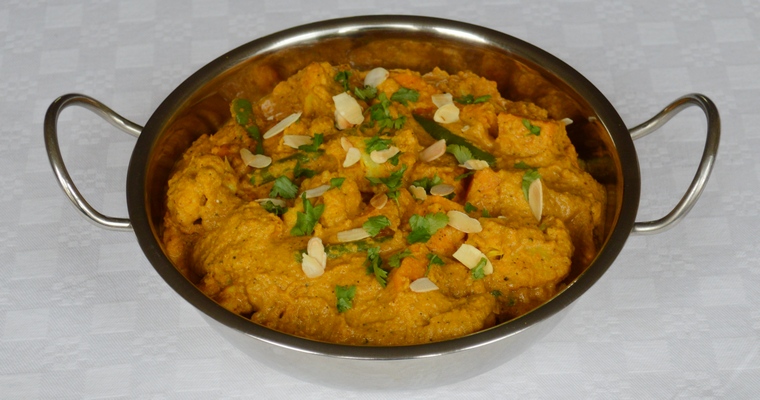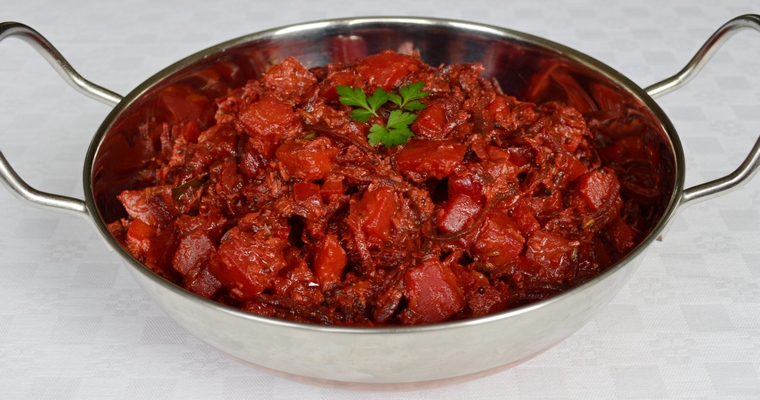Thick curry made by simmering lentils in a spiced sauce until they break down to a creamy consistency. This vegan dish is the ultimate Indian comfort food.
Dal is an Indian dish made from split pulses that are simmered until they start to fall apart. A fried garnish of spices is added at the end, together with the infused cooking oil. This is sometimes referred to as a ‘final fry up’ or ‘sizzle’ in English, but is known as ‘tarka’ in India (read my article on How to cook curries from scratch and with curry pastes for more information on this technique). The consistency of dal varies from a thin soup to a stiff puree, depending on the variety of pulse used, and and the amount of liquid added.
Dal is usually made using a pulse called ‘chana dal’ that is similar to, but not the same as, yellow split peas. Chana dal is made by hulling and then splitting an Indian variety of chickpea. While chickpeas are notoriously difficult to digest, red lentils do not need to be soaked, and cook quickly. As they do not hold their shape well, red lentils create a thicker style of dal, which can be scooped up with a fork and does not need to be eaten with rice. In fact, the porridge-like consistency makes for an excellent breakfast heaped over a couple of sliced hard-boiled eggs. This is a gentle recipe to try if you are recovering from a damaged gut and are trying to ease yourself back into pulses. If you feel nervous, then pre-soak the lentils for 8 hours to make them softer and more digestible.
Ingredients
for the curry base:
- 3 tablespoons coconut oil
- 2 onions (260g), peeled and finely chopped
- 1 teaspoon ground cumin
- 1 teaspoon chilli powder
- 1 teaspoon turmeric
- 500ml water
- 200ml (1/2 can) coconut milk
- 1 butternut squash (650g), peeled, deseeded and chopped into 2cm cubes
- 200g red split lentils
- 1 teaspoon salt
- 1/2 teaspoon freshly ground black pepper
for the tarka:
- 1 1/2 tablespoons coconut oil
- 1 tablespoon black mustard seeds
- 1/8 teaspoon asafoetida (optional – adds a musky flavour)
- 6 garlic cloves, peeled and sliced
- 3 tomatoes (300g)
- 1 teaspoon garam masala
to serve:
- 1 fresh green chilli, thinly sliced on the diagonal
- 1 lime, sliced into wedges
Instructions
- Fry the onion and spices. Heat 3 tablespoons of coconut oil in a heavy-based casserole / deep-sided saucepan over a medium-high heat. Add the onion and cook until the onion is deep brown at the edges, but not burnt – about 10-12 minutes.
- Turn the heat down to medium. Add the ground cumin and chilli powder, and fry until they release a fragrant aroma, stirring constantly to prevent sticking – about 30 seconds. Add the turmeric and fry for 30 seconds.
- Simmer the lentils. Add the coconut milk and stir until blended, breaking up any solid lumps of coconut cream. Add the water and stir until blended. Add the remaining curry base ingredients (red lentils, butternut squash, salt and pepper). Give the whole lot a good stir, then cover with a lid and bring to the boil.
- Reduce the heat to a fairly brisk simmer and cook, covered, until the lentils break down and the butternut squash pieces are fork tender but still retain their shape – about 25 minutes. Stir occasionally towards the end, to stop the sauce from sticking to the bottom. Add a splash more water if the sauce starts to dry out.
- Fry the tarka. Meanwhile, prepare the tomatoes. For a smoother texture, peel the tomatoes before chopping (place in a bowl and cover with just-boiled water. Leave for 5 minutes, then drain and peel). De-seed the tomatoes by chopping into quarters and cutting loose the seeds where they are attached at the top. Then hold the tomatoes over a waste bowl and scoop out the seeds and white central bits with your thumb. Finely chop the flesh.
- Heat 1 1/2 tablespoons of coconut oil in a small frying pan over a medium heat. Add the mustard seeds, and fry until they begin to pop – about 1-2 minutes. Add the asafoetida (if using), and fry until it releases a fragrant aroma, stirring constantly to prevent sticking – about 30 seconds. Add the garlic and fry until it begins to lightly brown at the edges – about 2 minutes. Stir in the chopped tomatoes. Reduce the heat to low, and cook until the tomato juices are released and evaporate – about 2-3 minutes. Turn off the heat, and set aside until needed.
- Assemble the curry. Once the curry base is cooked, stir in the tarka and the garam masala. Transfer into a serving dish and garnish with the sliced chillies and a wedge of lime on the side to squeeze over.

